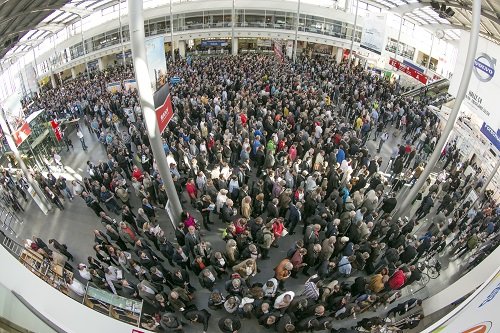Speed and profitability are some of the main success factors in the construction industry. In particular, this also applies to formwork experts who are tackling these challenges and will again present a large number of products and innovations at bauma 2016. Here are some examples of new and further developments that will be exhibited in Munich from April 11 to 17, 2016.
A new development from Peri, a formwork and scaffolding technology company based in Weissenhorn in Germany, is aimed at foreign markets with a colder climate. For this purpose, Peri combined its proven Maximo wall formwork system with optional, easy-to-mount heating modules. Heating ensures that concreting work can be carried out even at low temperatures since the hydration process is not inhibited.
Another innovation which Peri will present at the industry meeting point in Munich is a new core automatic climbing formwork which was specially designed for high-rise building cores with medium to large dimensions. New hydraulic units supply the power to climbing hydraulic cylinders which produce a hoisting capacity of 40 tons. Due to this high load-bearing capacity, large concrete placing booms can also be raised and supported during operation.
One key factor in greater efficiency is the ideal formwork removal time. Doka, a formwork specialist from Austria, has been offering the Concremote service for this purpose for some time now. The development of the compressive strength and hydration heat of the concrete during construction is measured in real time in this respect. Formwork removal times, after-treatment times and the earliest point for prestressing can be derived from the strength development of the concrete. Doka will present a further development of the system at bauma.
The new “Concremote plug.In“ is integrated directly in the ceiling system of the formwork and automatically provides information on the correct time for formwork removal.
Speed is also vital in many regions of Latin America, Southeast Asia and the Middle East, especially when inexpensive housing has to be built for large numbers of people. Doka has developed Doka OneGo, a monolithic formwork system, as a solution to this challenge. In this system, which will be presented during bauma, walls and ceilings are concreted in one cast. According to the company, the application area of Doka OneGo ranges from one-family houses and apartment complexes through to multi-storey residential buildings.
Friedr. Ischebeck GmbH (Ennepetal, Germany) will present a new 30 kN prop with an external aluminum tube and a tubular steel threaded spindle in Munich. The special aspect of this prop is a quick adjustment nut normally found in steel props. Thanks to the special external aluminum tube profile, the new prop also features the option of elevation and reinforcement with aluminum stiffening frames.
Based on the model in other industries, the construction industry is also increasingly striving to create a chain, which is continuous as possible, from planning and construction through to the operation of buildings. The key phrase here is Building Information Modeling (BIM). For example, the manufacturer Paschal from Steinach, Germany, is heading in this direction with its already tested formwork software Paschal-Plan light (PPL). It supports the planning and implementation process for concrete structures throughout the entire construction period. According to the company, the practical experience of Paschal itself and many other users has been included in the adapted version that will be presented at bauma 2016. One new feature, for example, is the “ceiling formwork” module. In-situ concrete ceiling formwork and filigree ceiling supports can be produced automatically with this module. The shoring system is also dimensioned based on the calculation in DIN EN 12812. According to Paschal, 3D models can be produced quickly and easily using the “Design” module.
With just one click, users can generate a cross-system material list from the parameters in the 3D model. The “Warehouse” model can be used to administer the entire stock of formwork and machines transparently – on both a building site and in a building yard.
Further information on bauma: www.bauma.de

bauma Messe Muenchen
 Constructionshows
Constructionshows